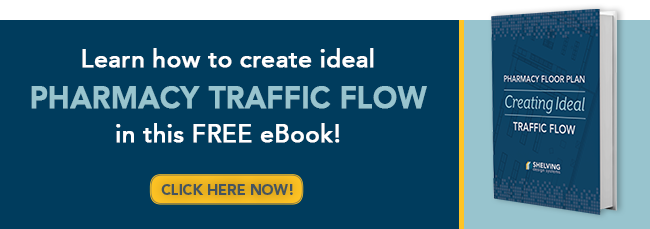 As owner/manager of an independent, community pharmacy, you've no doubt got lots on your plate. This is especially true during a time of increased healthcare reform and the added pressures associated with the need to maintain a high-quality (Star) rating due to its importance in your being included in Medicare Part D preferred networks and various commercial drug plans.
As owner/manager of an independent, community pharmacy, you've no doubt got lots on your plate. This is especially true during a time of increased healthcare reform and the added pressures associated with the need to maintain a high-quality (Star) rating due to its importance in your being included in Medicare Part D preferred networks and various commercial drug plans.
While your pharmacy basically exists in two parts – the front-end merchandising area and the rear-end prescription filling area – these two sides of your business are likely far from equal in their revenue generating capabilities. Most of your bottom line comes from what's happening in your back-end operation. While the front end remains an important part of the equation, it's for reasons other than basic income production. In fact, the front-end merchandising section of a typical community pharmacy is only responsible for about 10% of the revenue generated by the store.
What's most important about your front-end area is the mood that it sets for your customers. Let's face it, they can likely get their medications at any number of pharmacy outlets, including ordering online but, as a group, these customers appreciate a warm, comfortable shopping experience and especially like it when they receive a high level of personal service. If you can provide what they want and what they've come to expect, then you'll be creating a loyal shopper who will look to you when the need for what you sell arises.
Pharmacy Workflow
While the term pharmacy workflow might be equally applied to front-end activities as well as those taking place behind the prescription counter, it's generally accepted that pharmacy workflow concerns itself with the standard steps involved in filling patients' prescriptions. Becoming more efficient in the completion of these workflow steps can provide several benefits, not the least of which is lowering dispensing costs, thereby increasing profits. In addition, speeding up the Rx filling process will keep your clients happy as they'll view your speed and personalized service as part of a positive shopping experience.
FAQs About Pharmacy Workflow
Every pharmacy Rx filling operation incorporates some type of workflow system, whether or not that system has been formalized. Even a small, one-person operation will have a particular workflow, which will include the steps necessary to fill a prescription from the first step, which is the drop-off (or phone-in or online-order) to the last step, which is the delivery of the ordered medication to the patient. Working on the pharmacy workflow to make it more efficient is one of the most important (and ongoing) factors affecting your profitability. There's plenty of information out there on ways to do this as well as a wide range of software programs designed to streamline your workflow into a lean and mean process. Following are some frequently asked questions regarding pharmacy workflow:
Q: How many separate steps make up a typical pharmacy workflow?
A: Ideally you'll have six steps: Intake, Input, Filling, Verification, Pickup and Consultation.
Q: Why is workflow efficiency so important?
A: Improving efficiency means giving more time to the pharmacist to conduct high-value, non-dispensing duties such as giving immunizations, health screenings, disease state management, medication therapy management, medication review and more.
Q: Where's the best place to begin workflow improvement?
A: Start with a detailed study of your current workflow process, timing each activity, counting the walking steps each person must take to complete a task, etc. This will be your baseline for future improvement.
An efficient workflow is the single most important factor in your drugstore. You'll find dozens of workflow informational blog entries here on the site.




